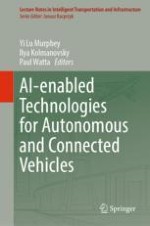This book reports on cutting-edge research and advances in the field of intelligent vehicle systems. It presents a broad range of AI-enabled technologies, with a focus on automated, autonomous and connected vehicle systems. It covers advanced machine learning technologies, including deep and reinforcement learning algorithms, transfer learning and learning from big data, as well as control theory applied to mobility and vehicle systems. Furthermore, it reports on cutting-edge technologies for environmental perception and vehicle-to-everything (V2X), discussing socioeconomic and environmental implications, and aspects related to human factors and energy-efficiency alike, of automated mobility. Gathering chapters written by renowned researchers and professionals, this book offers a good balance of theoretical and practical knowledge. It provides researchers, practitioners and policy makers with a comprehensive and timely guide on the field of autonomous driving technologies.
